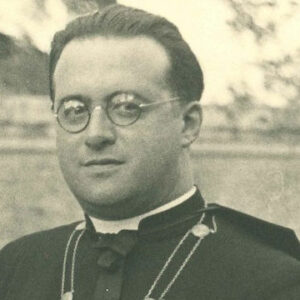In a career spanning more than 40 years, Belgian scientist Georges Lemaitre developed some of the most significant theories in cosmology and astronomy. Lemaitre, who was also a priest, was actively pursued by the Vatican to work as a contraceptive researcher. His first theories on the “expansion of the universe” were published in a Belgian scientific journal in 1927, and throughout his life he continued to conduct research on the subject that made him one of the most influential scientists of his generation. Pope John XXIII named him a prelate in 1960, but it was as a scientist that he made his name. Lemaitre was also in charge of the research that ultimately became known as Hubble’s Law, but his contribution to cosmological findings was not recognized at the time. He conducted research using Einstein’s Theory of Relativity and developed the theory that Hubble discovered two years later. Throughout his whole career, Georges Lemaitre worked as a professor at the Catholic University of Leuven. Lemaitre was also very excited about the advancement of computers and calculators and had a keen interest in new technology.
Early Childhood & Life
Joseph Lemaitre and his wife Maguerite Lannoy welcomed Georges Henri Joseph Edouard Lemaitre into the world on July 17, 1894 in Leuven, Belgium. There isn’t a lot of information known concerning his parents’ occupations. Whether or not he had siblings is unknown.
Georges Lemaitre received his first education at the College du Sacre-Couer, a Jesuit institution in Charleroi. Lemaitre enrolled in the Catholic University of Leuven to study civil engineering when he was 17 years old after completing high school. But in 1914, he decided to forgo his study in order to join the army and fight in the First World War.
Georges Lemaitre returned to school after the war and focused on mathematics and physics until earning his Ph.D. in 1920. Three years later, he enrolled at Cambridge University’s St. Edmund’s College as a post-graduate student to study numerical analysis and cosmology. He also was ordained as a Christian priest that same year. He then spent a year at the Harvard Observatory before enrolling in a doctoral program at the Massachusetts Institute of Technology in Boston.
Career of Georges Lemaître
Georges Lemaitre began his career in his native Belgium in 1925 after returning from the United States, when the Catholic University of Leuven hired him as a part-time instructor. Two years later, the “Annals of the Scientific Society of Brussels” released Lemaitre’s well-known paper outlining the hypothesis of the “expansion of the universe,” “A Homogenous universe of constant mass and growing radius accounting for the radial velocity of extragalactic nebulae.” After the paper was translated into English, it gained additional notoriety. He would later develop the “Big Bang Theory,” as well.
In 1927, Georges Lemaitre, who had a similar interest in cosmology, published a paper in which he used Einstein’s Theory of Relativity to explain the phenomenon that would eventually come to be known as Hubble’s Law. Lemaitre was also successful in calculating the Hubble constant and rose to prominence in the cosmological community.
After his work was translated into English, the British Society invited him to London in 1931 for a conference on spirituality and the cosmos because of his increasingly well-known beliefs about the universe. He expanded on his ‘extension of the cosmos’ theory at the conference. Additionally, he visited significant scientific gatherings like the Solvay Conference and the one held a few years later at Princeton University in the United States.
In 1933, he gave a number of presentations at scientific conferences in the United States, and during one of them, Albert Einstein, who was also invited, is thought to have praised Lemaitre’s hypothesis of cosmic rays. Lemaitre returned to the topic of the “expansion of the universe” the same year and wrote a fresh paper that would later rank among his greatest accomplishments.
In 1936, the Pontifical Academy of Sciences elected Georges Lemaitre as a member; 24 years later, he was named the academy’s president. He would continue to be a member forever. The Royal Academy of Sciences and Arts of Belgium members also chose him to be a member.
In the 1950s, Georges Lemaitre scaled back his obligations in the teaching field before quitting entirely. His final years were spent studying mathematics, and he became very interested in the then-emerging subject of computer engineering.
Recognition & Achievements
The Francqui Prize was given to him on March 17, 1934, by Belgian King Leopold III. The greatest honor for scientists in Belgium is this.
The Eddington Medal was presented to him in 1953 by the Royal Astronomical Society.
In his lengthy and illustrious career as a scientist, Georges Lemaitre’s second paper on the “expansion of the universe,” which was published in the “Annals of the Scientific Society of Brussels” in 1933, is without a doubt his best achievement.
Personal Legacy & Life
Georges Lemaitre was a Catholic priest who kept a celibate lifestyle. He never married and had no children as a result.
At the age of 71, Lemaitre passed away in Leuven, Belgium, on June 20, 1966. His cause of death is unclear.
Net Worth of Georges Lemaître
The estimated net worth of Georges Lemaître is around $1 million.


